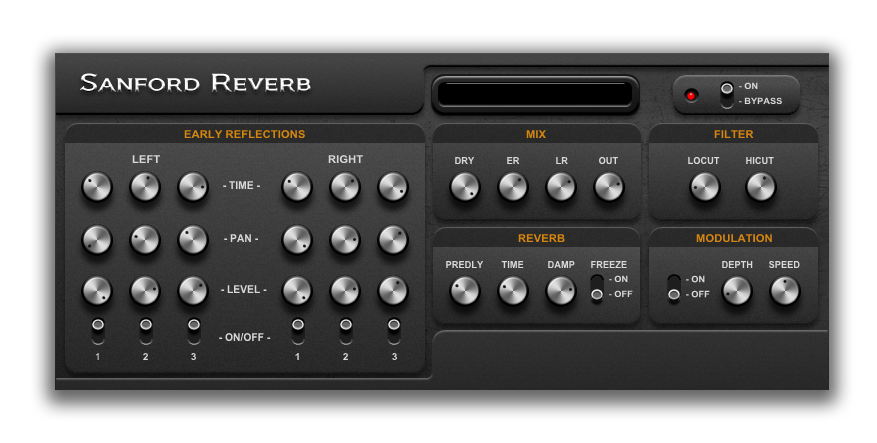

Positive values attenuate the low frequencies in a limpid, natural manner, and negative values extend the duration of the decay of the reverb’s low frequency components. LOW TILT – This knob controls the reverb’s low frequency response. The exceptional processing quality ensures that the sound remains natural and clear. It allows to tune the reverb’s sound to match the natural properties of different types of spaces, or the character of a specific sound source or mix. Negative values make the sound darker and positive values make it brighter.

TILT – This knob tilts the reverb’s entire frequency response around a central frequency point, without impacting the definition of the reverb’s sound. At higher levels, the reverberation can sound denser or smoother, and individual echoes are imperceptible. When the diffusion is off or set to a low level, the reverberation can sound sparse and the individual echoes that make up the reverb effect may be perceptible. Rev-A’s high quality processing ensures optimal sound quality with each setting, and at level 10, it eliminates any perceptible absorption of high frequencies throughout the entire duration of the reverb.ĭIFFUSION – This knob controls the density of the reverb effect. Lower levels allow a quicker decay of high frequencies, and higher levels allow a slower decay. HI DECAY – This parameter simulates the natural phenomena of more rapid absorption of the high frequency components in a reverb’s sound.

Rev-A’s high quality processing ensures that at level 10, the reverb’s sound is pellucid, with high frequencies unattenuated. It has an important role in simulating the properties of different listening spaces.

Presets are saved with both the normal and tempo sync modes’ predelay values.īRIGHTNESS – This parameter adjusts the audio frequency at which a static low-pass filter is applied. TEMPO SYNC – The small button above the Predelay knob allows to synchronize the predelay time to the project’s tempo, with a time signature based on full, triplet or dotted beats. Rev-A provides a predelay time range from 0 to 800 milliseconds. PREDELAY – This is the time between the input signal and the start of the reverb sound.


 0 kommentar(er)
0 kommentar(er)
